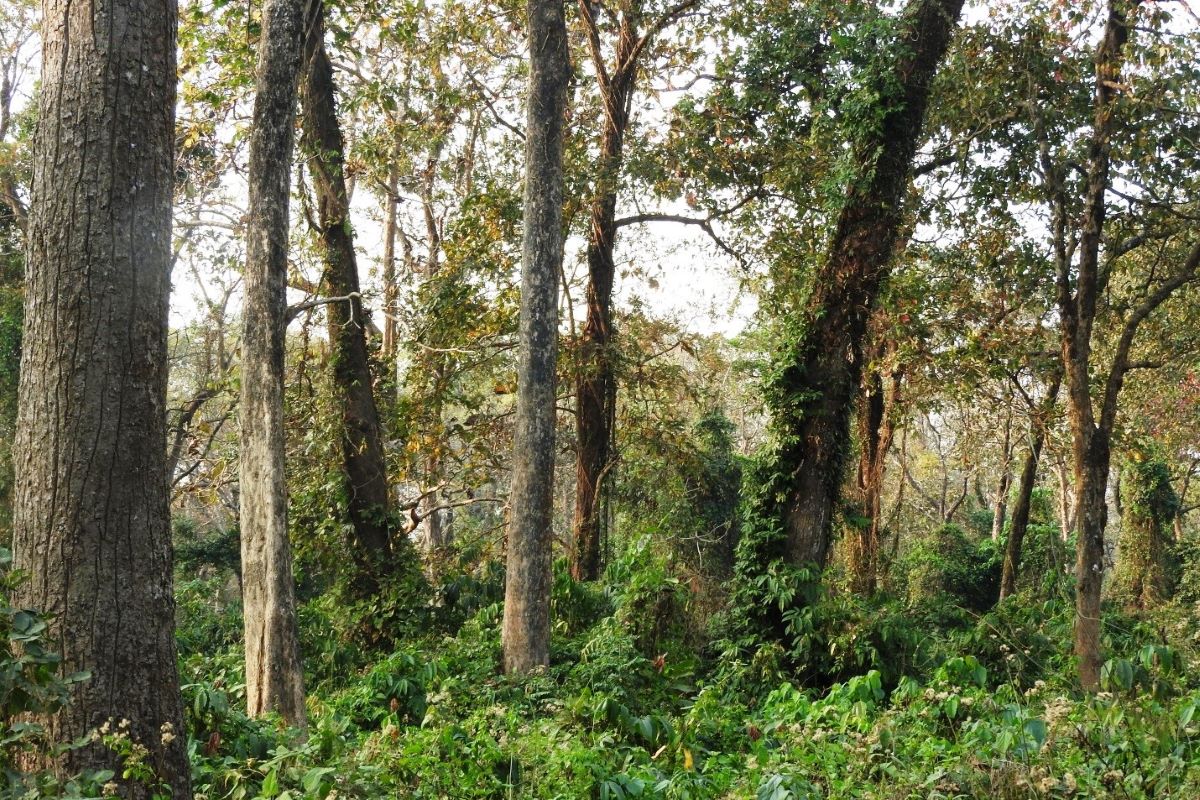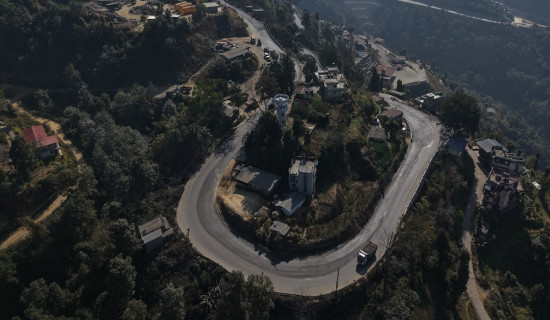- Friday, 12 December 2025
Invasive species of plants destroying biodiversity in Jalthal forest
Jhapa, Sept 28: Indigenous species of plants are increasingly under threat of extinction due to the spread of invasive plant species inside Jalthal forest area in the south-eastern part of Jhapa district.
With a rich biodiversity, Jalthal forest is spread over approximately 6,000 hectares from Kachankabal, the place at the country's lowest altitude, to Haldibari and Bahradashi, covering three rural municipalities and the Bhadrapur Municipality.
According to Dr Lila Nath Sharma, an expert at Forest Action Nepal, this forest is a model natural forest not only of Nepal but also of South Asia because of a variety of rare plants, shrubs and herbs that grow here.
More than 450 species of plants grow here while it is the habitat for over 200 species of birds. Similarly, more than 140 species of trees have been found in the Jalthal forest.
"From the largest terrestrial animal, elephant, to the smallest mouse deer, inhabit in this forest. Not just trees and birds, more than 40 species of fish are found in the local wetlands," Dr Sharma, who is also a researcher, said.
He said that in terms of plant species diversity and composition, the Jalthal forest is distinct from other forests in Nepal. "It is an island in a densely populated region. It is also true that forest island of this size does not exist in the Terai region of Nepal. This shows geographical uniqueness of Jalthal forest, a Charkose forest. The forest is considered as unique and biodiversity rich."
The forest is also worth mentioning for diversity of faunal groups like birds, reptiles, amphibians, mollusks and butterflies. The forest is an important habitat for Burmese Python.
Dr Sharma has written a book on the biodiversity of Jalthal forest after more than a decade of research, and his research articles have been published in international journals.
He said six species of trees not previously recorded in Nepal have been found in this forest, noting that plants believed to be found only in the hills and Chure region have been found in this forest, which is surprising.
As he said, the Latahar tree is one iconic tree of Jalthal which has not been reported in wild in the central and western in Nepal. Jalthal forest is also a rich habitat of Cycas trees. Cycas trees are called as ‘Thakal’ in Jalthal, which is completely different from what is called as Thakal in central and western Nepal. Cycas is reported mainly from Chure region of eastern Nepal. There are occasional sightings in central Nepal. But there may not be any record of Cycas from proper Terai forest of Nepal.
"Similarly, we have very few records of Palms from Terai forest and Jalthal could be important forest in this regard as well. We have spotted a palm species which could be a very rare species of palm in Nepal," Dr Sharma said.
Sharma stated that a species of betel nut plant known as 'Himalayan Pinanga' is also found here. Although many rare plants are found in large numbers, they have not been properly conserved.
Human encroachment and the invasion of exotic species are causing biodiversity to disappear. The activity of poachers is leading to the extinction of animals.
Deer, antelopes and wild boars are under threat due to hunters. Mousedeer, which is not found elsewhere, has not been seen for several years, Sharma said, quoting the locals. It is named mousedeer because of its small size.
Spread of invasive plants: a major problem
As many as 17 species of invasive plant species has been observed in Jalthal forest. Among them, the invasive shrub named Mikania, which locals call Pyangri Lahara, has emerged as the biggest problem, researcher Sharma said.
According to him, invasive species cover was not equal in the forest, they were plentiful in open areas and forest fringes while their density was lower under the continuous and close crown cover.
Another type of invasive shrub known as 'ultokanda' has also become a significant problem. He stated that these invasive shrubs threaten the extinction of rare plants such as 'sarpagandha', 'kurilo', 'madhu', 'deule chyau' and others. Even the thickets are being covered and destroyed by the invasive shrubs.
Dr Sharma believes that since the open areas have been covered by these invasive forest creepers, it is necessary for the local community forest users groups and municipality to implement a programme to control these invasive species to protect the indigenous species of trees and plants found in Jalthal forest. (RSS)
















